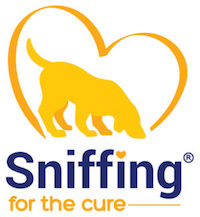Dog companions share the same environment as their humans and are also susceptible to various spontaneous cancers that affect the human population. One of these cancers is glioblastoma. Glioblastoma is a type of cancer that can develop in the brain or spinal cord. These aggressive tumors can occur at any age but tend to happen more often in older adults.
Glioblastomas also occur in companion dogs. As in people, glioblastomas occurs in middle-aged dogs continuing through into the geriatric population, with the peak age of diagnosis at 7–8 years. As in humans, dogs’ nervous system cancers are thought to be the cause of 1%–3% of deaths.
Short-nosed (brachycephalic) breeds, such as Boxers and Boston Terriers, harbor the highest incidence of these tumors. Male and female dogs are equally affected.
Unfortunately, there is no standard treatment for brain tumors in dogs. The treatments range from management of symptoms to surgery, radiation, and chemotherapy.
The average survival of dogs with primary brain tumors receiving only treatment for their symptoms is around two months. If radiation is provided, the survival may increase to about 9–14 months.
About 12,000 dogs per year spontaneously develop brain tumors.
That represents a significant number of companion animals that are affected by these brain tumors and can potentially benefit from a clinical trial.
Dogs who do not have the opportunity to be included in clinical trials are facing approximately two months until euthanasia (death) when only the symptoms are addressed. Alternatively, by participating in a trial, dogs with primary brain tumors could experience some benefits lasting from months to over a year.
It is clear that our understanding of these aggressive brain tumors is far from complete. It is also evident the critical need to find better treatments for these devastating cancers. Only with the creative coordination and collaboration between the basic scientists, veterinarians, clinicians, academic centers, the private sector and the community, we will be able to make a meaningful discovery that will benefit both human and our canine companions.






No Comments